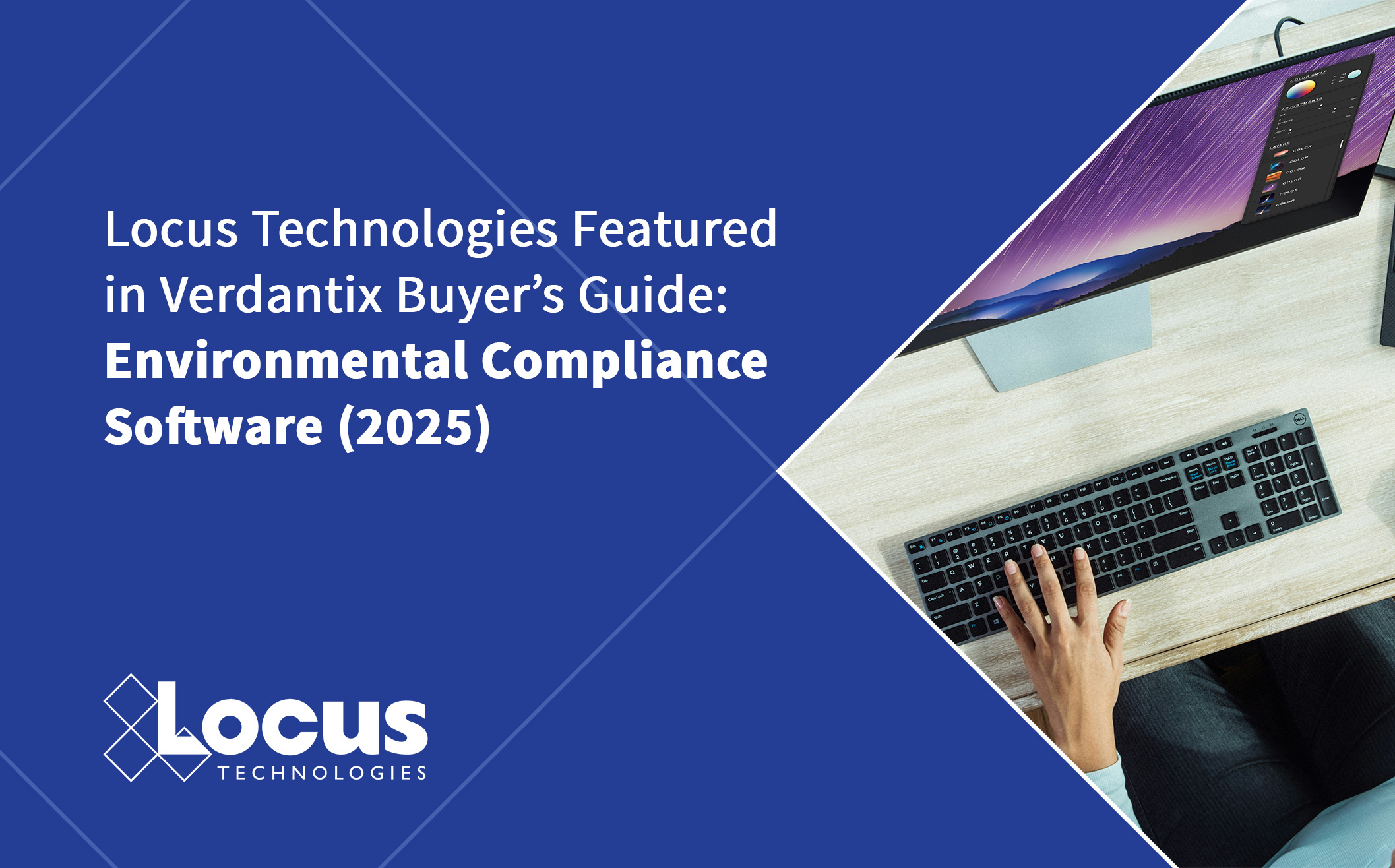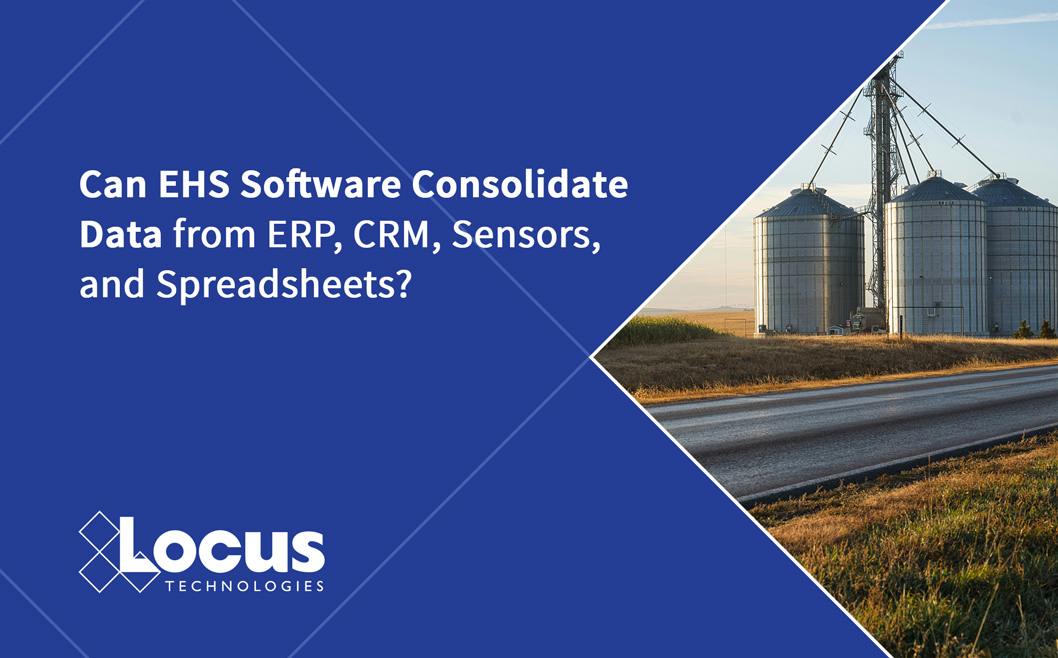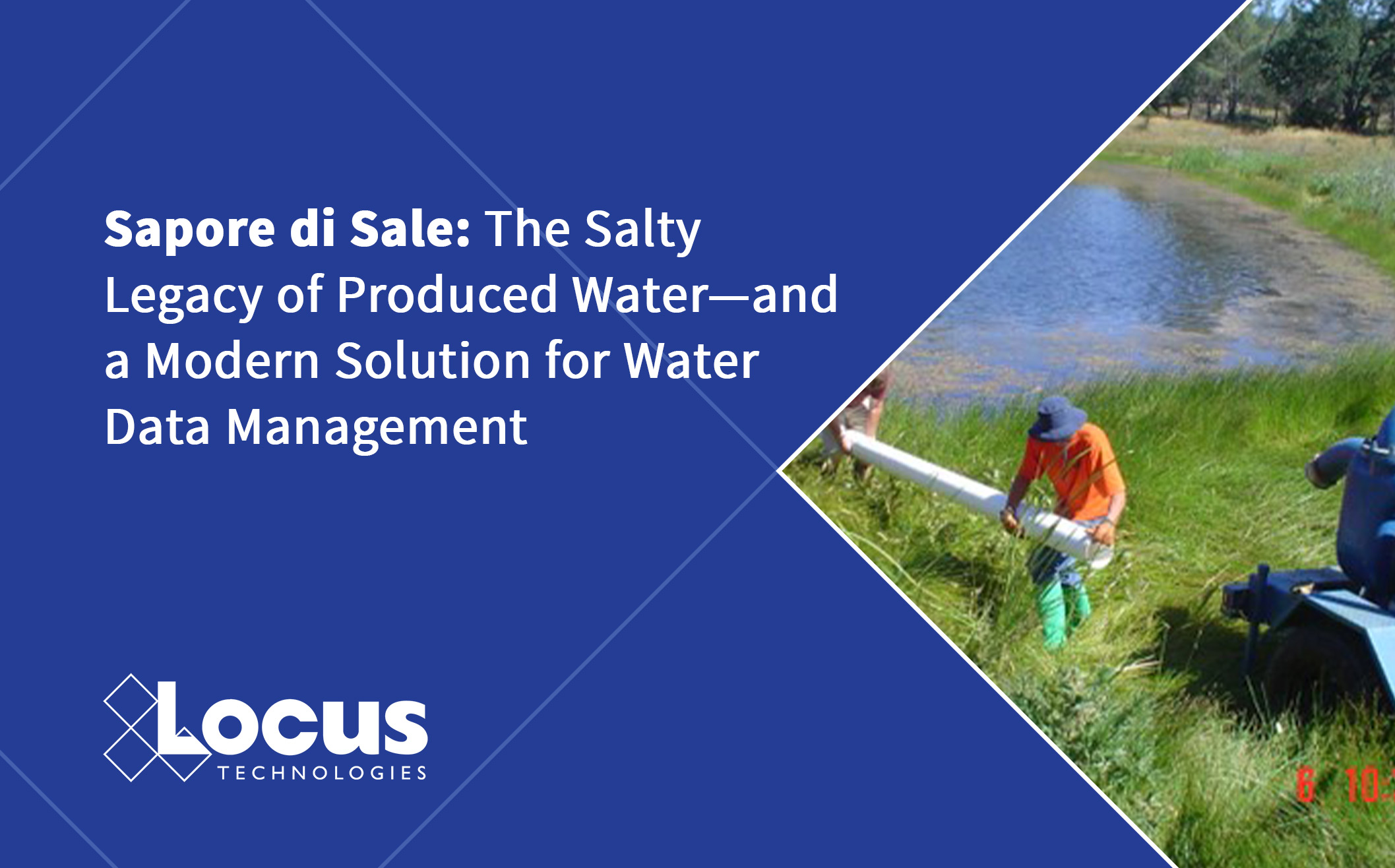
Few titles evoke the taste of summer quite like “Sapore di Sale,” the iconic 1963 song by Gino Paoli that conjures Mediterranean breezes and memories etched in salt. But in today’s industrial world, that same phrase, “taste of salt,” takes on an entirely different meaning when we talk about Produced Water. It’s the briny by product that comes to the surface during oil and gas extraction, and it brings with it a challenge that’s both environmental and logistical. At Locus Technologies, we’ve been addressing complex water challenges since the very beginning of the SaaS movement. And now, we’re proud to announce that Produced Water Management has officially joined the Locus Water Suite—a modern water data management software suite delivering a comprehensive, GIS-enabled solution designed to handle the salty surge.
The Salty Truth About Produced Water and Water Data Management
In the oil and gas industry, “produced water” refers to the water that is extracted alongside oil and gas during drilling and hydraulic fracturing (fracking). This water is not just abundant, it is also intensely saline, often containing high concentrations of surfactants, total dissolved solids (TDS), chlorides, metals, hydrocarbons, and naturally occurring radioactive materials.
Historically, salt has held immense value. Referred to as “white gold,” it was once the foundation of entire economies. Cities like Salzburg, Austria, literally named “Salt Castle”, built their wealth on the salt trade. The preservation power of salt made it essential for food security and commerce long before refrigeration. That same mineral, so treasured in the past, is now a central character in the modern energy story, but this time, it’s a lingering challenge instead of a treasure.
In a full-circle twist worthy of history’s irony, the very salt-laden waters once considered a waste byproduct of oil and gas operations may be poised for a comeback—not as a pollutant, but as a potential resource. Emerging technologies are beginning to explore how produced water, especially from lithium-rich formations, could be a new source of lithium extraction. As the global demand for lithium—crucial for batteries and the clean energy transition—continues to soar, the “white gold” of the past may once again live up to its name. While the recovery of lithium and other minerals from produced water remains technologically complex and cost-intensive, the vision of turning waste into value adds a compelling sustainability dimension to produced water management, aligning perfectly with Locus’ mission.
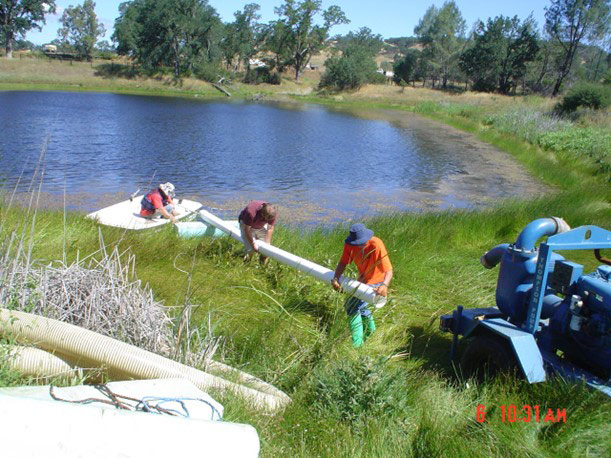
Just as European kingdoms once managed vast salt logistics networks, today’s oil and gas operators must manage the distribution, treatment, and reuse of massive volumes of salty produced water, only now under environmental and regulatory scrutiny.
A New Chapter in the Locus Water Suite
Locus’ Produced Water Management application is built to support the full lifecycle of produced water:
- Water Quality Tracking – Integrated with Locus EIM, the app tracks key analytes such as TDS, chlorides, barium, and radionuclides, supporting compliance with disposal and reuse thresholds.
- Logistics and Movement – From source to truck to pipeline to injection well or reuse point, the software tracks every gallon, every transfer, and every location. Integration with Locus GIS+ enables real-time visualization of where the water is, where it’s going, and where it’s been.
- Reuse and Beneficial Use – Whether treated for agricultural reuse or recirculated for fracturing operations, Locus supports the documentation, tracking, and analysis of reuse scenarios. Custom workflows and rules engines enforce best practices and permit requirements.
- Regulatory Reporting – Whether it’s state oil and gas commissions, EPA UIC permits, or ESG disclosures, the software streamlines complex reporting processes and automates data validation to reduce risk.
Turning a Liability into an Asset
Produced water is no longer just a nuisance to be disposed of—it’s a resource to be managed, recycled, and reused. Much like salt’s historical shift from a luxury good to a common commodity, the role of produced water is evolving. In arid oil basins like the Permian, its reuse is not just economically attractive—it’s essential for operational continuity.
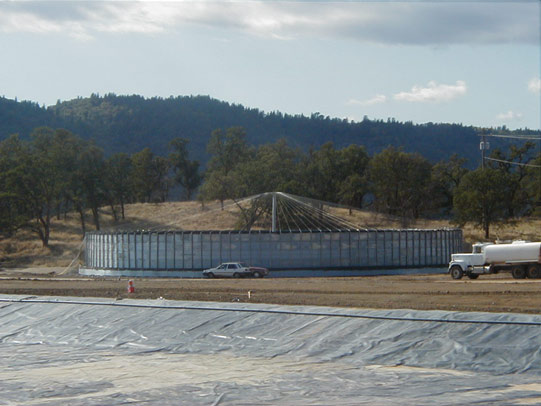
Locus’ Produced Water Management application allows operators to transition from reactive water management to strategic resource planning. With full integration into the Locus Platform, this module becomes the latest piece of the industry’s most complete SaaS-based water suite.
Digitizing the Entire Water Chain
Produced water isn’t just a data point, it’s a moving, regulated, quality-constrained resource. Traditional spreadsheets and fragmented systems can’t keep up with the pace of produced water logistics. The day-to-day reality of produced water is not about strategic vision as much as operational execution. As General Omar Bradley once said, “Amateurs talk strategy. Professionals talk logistics.” That truth holds firm in the oilfield, where the ability to track, move, reuse, and dispose of billions of barrels of produced water safely and efficiently is what separates success from setback. It’s not just a software problem, it’s a logistics one, and Locus is solving it with technology built for the field. Locus software connects the dots between operations, EHS compliance, and sustainability
Using Locus’ GIS+ engine, companies can track produced water across thousands of wells, storage tanks, and facilities, and miles of pipelines visually. The interactive maps help operators quickly identify capacity issues, optimize reuse, and ensure water stays within regulatory and corporate guardrails.
Why It Matters
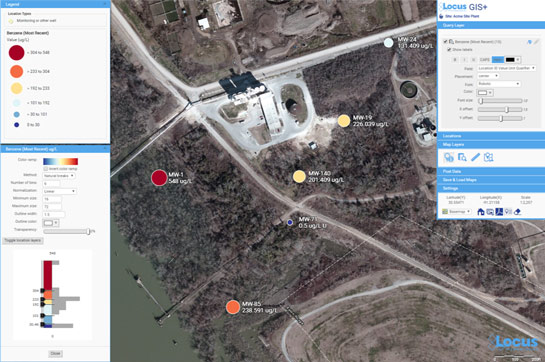
Produced water is no longer just a waste stream. It is now a key element of water strategy in the energy sector. New legislation in states like Texas opens the doors to industrial reuse, while ESG stakeholders are demanding accountability for every drop.
Locus’ Produced Water Management application is built for this moment. It reflects nearly three decades of innovation in environmental data management and compliance and offers a scalable, secure, and cloud-based solution to one of the industry’s most persistent challenges.
With this addition, Locus Water Suite becomes the most complete SaaS platform for managing water across its lifecycle, from source to reuse to discharge, across industries. “Sapore di Sale” once evoked romantic nostalgia. Today, it reminds us of the enduring presence and challenge of salt in our water systems.
At Locus, we’re helping companies turn the challenge of produced water into an opportunity for efficiency, sustainability, and innovation. We are helping the energy industry confront this salty legacy with smarter software and a sustainable strategy. Because white gold or not, it’s time to turn the tide on produced water.

Locus is the only self-funded water, air, soil, biological, energy, and waste EHS software company that is still owned and managed by its founder. The brightest minds in environmental science, embodied carbon, CO2 emissions, refrigerants, and PFAS hang their hats at Locus, and they’ve helped us to become a market leader in EHS software. Every client-facing employee at Locus has an advanced degree in science or professional EHS experience, and they incubate new ideas every day – such as how machine learning, AI, blockchain, and the Internet of Things will up the ante for EHS software, ESG, and sustainability.


